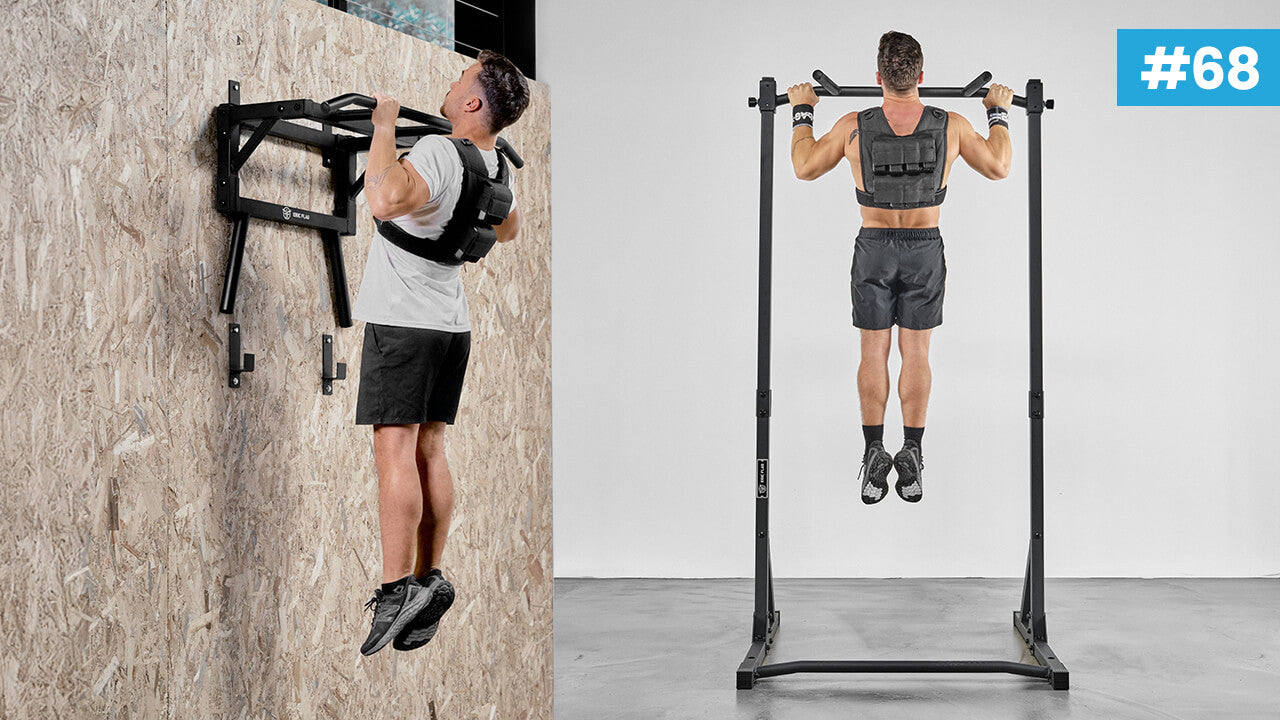Kettlebell Swing: Benefits & Technique
The kettlebell swing (or Russian swing) is a complete exercise that works several muscle groups. This movement is one of the most popular in functional strength training, mainly involving the posterior chain (glutes, hamstrings, lower back) but also the abdominals and shoulders.
In this article, we'll look at how to perform it perfectly, discover its benefits and learn what to do wrong to avoid injury.
Let's go, let's go! 🔥
What is Kettlebell Swing?
The kettlebell swing is an exercise in which a kettlebell is swung between the legs and then brought up to shoulder height by means of a powerful hip extension. This exercise energizes the posterior chain while improving core stability and endurance.
Muscles used
The kettlebell swing involves several muscle groups:
- Buttocks: particularly used when extending the hips.
- Hamstrings: work during the hip thrust phase.
- Back muscles (dorsal and lumbar): maintain posture and stability.
- Abdominals: to stabilize the spine.
- Shoulders: to control and accompany the movement of the kettlebell.
How to perform the Kettlebell Swing correctly?
Starting position
To begin, place the kettlebell in front of you. Your feet should be shoulder-width apart, with your toes turned slightly outwards. Grab the kettlebell with both hands and lean forward, keeping your back straight and your shoulders engaged.
Movement phases
-
Loading phase The kettlebell: contract your back muscles and pass the kettlebell between your legs, leaning slightly forward.

-
Propulsion phase Push your hips forward explosively, bringing the kettlebell up to shoulder level.

-
Descent phase Let the kettlebell come down under control by bending the knees slightly and re-engaging the hips.

The benefits of Kettlebell Swing
Improved cardio
The kettlebell swing is both a muscle-strengthening exercise and anexcellent cardio workout. The intensity of the movement raises the heart rate, improving endurance. When integrated into HIIT (High-Intensity Interval Training) circuits, it burns a large number of calories in a short space of time.
Strengthening muscles
This versatile exercisepromotes overall strengthening. The muscles of the legs, glutes, back and shoulders are particularly stimulated. It also helps develop explosive power in the hips, an essential skill in many sports.
Weight loss
One of the strengths of the kettlebell swing lies in its ability toburn calories and boost metabolism. By engaging many muscles simultaneously, it promotes highenergy consumption and continues to burn calories even after the workout.
Progress with the Kettlebell
Weight selection
We recommend starting with a moderate weight to master the technique before moving on to heavier weights. A weight of 8 to 12 kg is recommended for beginners.

It is also ideal to opt for a kettlebell kettlebell, which makes it easy to modify the load to suit your level and goals. This gives you the flexibility to start light to work on technique and gradually increase the weight as you gain strength and control, without having to invest in several kettlebells of different sizes...
Progression and variation of repetitions
You can vary the number of repetitions and intensity to suit your objectives. For endurance, opt for long sets (15 to 20 reps), while for strength, shorter sets with a heavier kettlebell (8 to 10 reps max) are recommended.
Common mistakes and how to avoid them

Hyperextension of the back
Make sure your spine remains neutral throughout the movement. Avoid over-extending the lower back by maintaining an active gluteal contraction at the top of the movement.
Excessive use of arms
The kettlebell swing relies on hip power, not arm strength. If you use your arms to lift, you risk reducing the effectiveness of the exercise.
Frequently asked questions about the Kettlebell Swing
What is the right training frequency for this exercise?
We recommend kettlebell swing sessions 2 to 3 times a week for a balanced workout.
What are the advantages over other exercises?
The kettlebell swing combines strength training and cardio, making it a very complete exercise. Unlike more isolated exercises, it involves a large part of the body in a single movement.
Is the kettlebell swing suitable for beginners?
Yes, the kettlebell swing is accessible to beginners, provided you master the technique right from the start. We recommend starting with a light weight and concentrating on the correct execution of the movement before increasing the intensity.
Final advice
The kettlebell swing is a must-have exercise for anyone looking to improve their overall fitness. With its many benefits for strength,endurance and stability, it fits perfectly into any training program.
When you feel comfortable with a weight, gradually increase it by 2 to 4 kg to avoid injury and maintain perfect execution. Progression should be based on your feelings If you can perform 3 to 4 sets of 12 to 15 repetitions without compromising your technique, you can consider increasing the load. 💪
I hope you enjoyed this article!
Feel free to comment if you do 😃
See you soon,
Eric Flag





Hinterlasse einen Kommentar
Diese Website ist durch hCaptcha geschützt und es gelten die allgemeinen Geschäftsbedingungen und Datenschutzbestimmungen von hCaptcha.